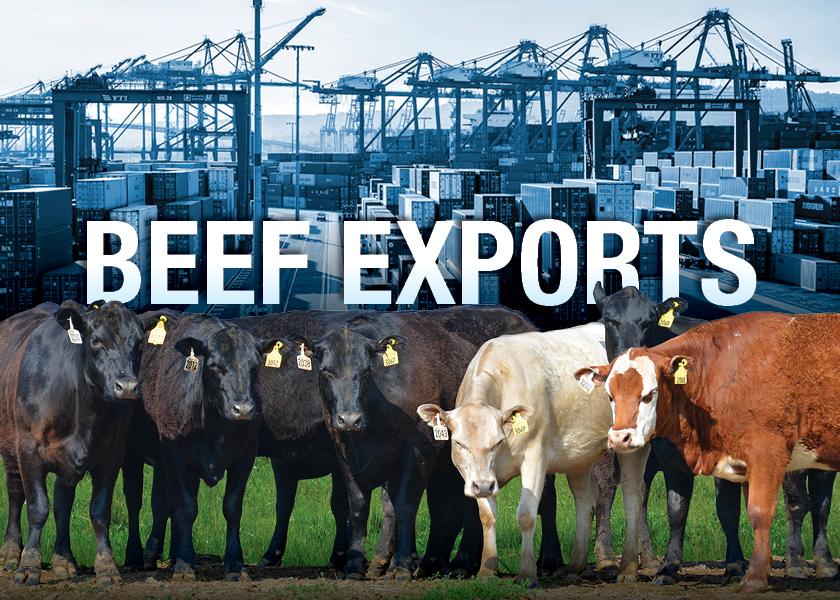U.S. Beef Exports Show Signs of Rebound, Reaching Five-Month Highs

U.S. beef exports show signs of a rebound, according to data released by USDA and compiled by the U.S. Meat Export Federation (USMEF) in a recent report.
Reaching the highest totals in five months, U.S. beef exports were down 5% year-over-year, totaling 120,495 metric tons (mt). Export value totaled $892.6 million for the month, which was 17% below last year’s total. To finish the first quarter, U.S. beef exports reached 326,494 mt, down 8% from last year, with values totaling $2.35 billion (down 22%).
“U.S. beef exports faced considerable headwinds late last year and at the beginning of 2023, but the March results show some encouraging trends,” Halstrom said. “Most Asian markets showed renewed momentum in March, while exports continued to trend higher to Mexico, the Caribbean and South Africa.”
As a bright spot for U.S. beef exports in March, Mexico reached volumes 17% higher than last year (17,454 mt), valued at $97.3 million (up 26%), UMSEF reports, as the strength of the peso led to greater Mexican customers purchasing power and the increase in Mexico’s beef demand in 2023.
Additionally, first quarter shipments to the destination were also up 13% (25,533 mt), with values 20% higher to reach $72.6 million. Variety meats, including livers, tripe, lips, hearts and tongues were among the top variety meat export markets to the destination.
Beef shipments to South Korea were down slightly in March from a year ago, yet reached the largest export volume in 10 months (25,605 mt), with a value of $200.5 million. In the first quarter, exports to Korea fell by 15% in volume (63,883 mt) and 36% in value ($505.3 million) year over year.
China/Hong Kong totals also stooped below last year’s levels, but were the highest since October 2022, reaching 21,211 mt. Value was down 9% YoY reaching $188.5 million. Overall, first quarter exports to the destination were down 11% (55,122 mt) in volume and 18% ($477.2 million) in value compared to 2022.
Japan is the leading market in volume for U.S. beef exports in 2023 with 69,280 mt, though down 4% from last year. With all COVID-related restrictions lifted at the end of April, a significant boost in tourism and hospitality sectors may help brighten prospects of U.S. beef demand to the destination in the coming months.
Impressive growth was seen in the Caribbean region, climbing 21% from last year (7,638 mt) and reaching a value of $67.1 million (up 18%) in the first quarter of 2023.
Demand for U.S. beef, including muscle cuts and variety meats, also saw increases in the Philippines, South Africa and Peru in March.
According to USMEF, March beef export value equated to $397.22 per head slaughtered, down 16% from last year, and accounted for 14.6% of total beef production.
The full report can be found on the USMEF website.








